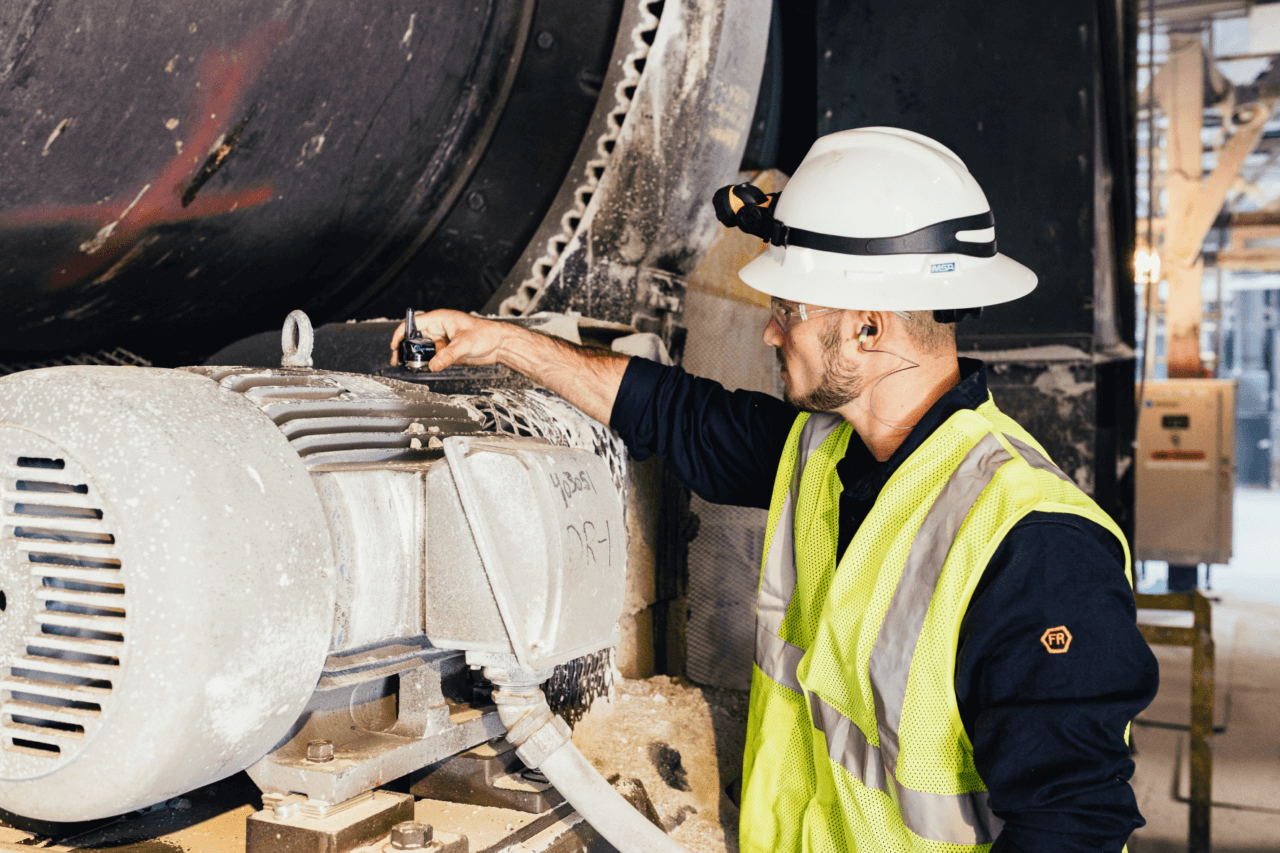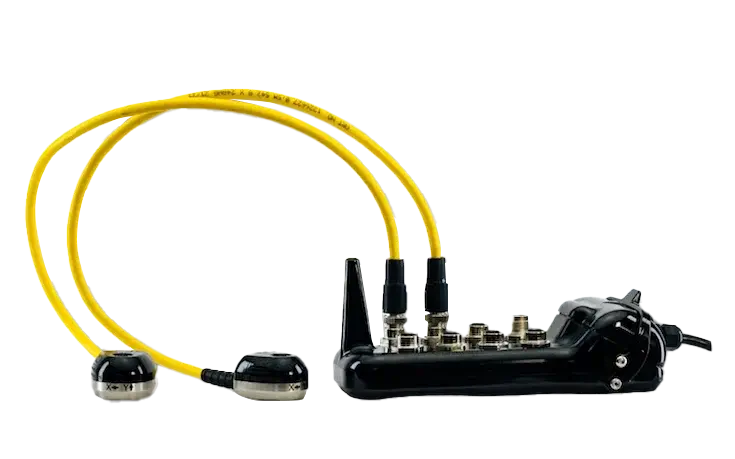How Does Vibration Monitoring Work?
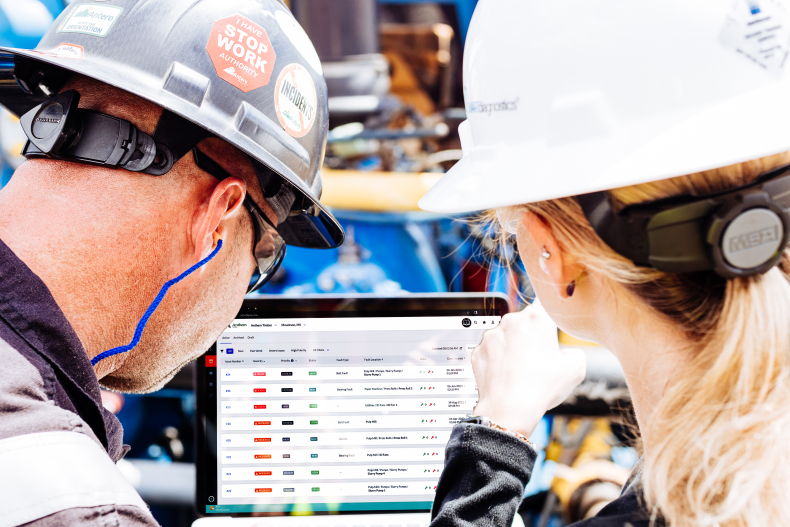
Vibration monitoring involves recording and analyzing the vibration signature of a piece of machinery. Vibration monitoring sensors are placed on specific points of a machine to first establish a baseline, and then monitor the amplitude, frequency, and intensity of its vibration signature. Any changes to the amplitude, frequency, or intensity of an asset’s vibration signature could indicate imminent or immediate machine failure or another problem that needs maintenance attention.
Continuous vibration monitoring is a key part of a predictive maintenance program. Machine failures can be forecast with varying levels of accuracy dependent on the vibration monitoring system being used.
Vibration Monitoring Applications
Vibration monitoring is commonly used in industries like oil and gas, forestry, automotive manufacturing, mining, power generation, and metals manufacturing. Examples of assets that can be monitored include compressors, fans, pumps, presses, and conveyors.
Fans are essential across most industries for cooling, filtering, fueling combustion, and more. Fan faults like loose belts, misalignment, and bearing wear often go unnoticed until it’s too late—issues that can be detected earlier on by monitoring for slight changes in their vibration signatures. This can represent a major boost to profitability, as fan downtime can cost tens to hundreds of thousands of dollars per hour.
Increasing efficiency on just one 200HP fan can save tens of thousands of dollars per year.
One of the most critical assets in an automotive plant is the press and it’s press crown. Any disruption to the operation of the press crown can stop production entirely. Because of its placement, the press crown is difficult to access for maintenance and monitoring. Remote vibration monitoring saves an immense amount of technician time and risk and provides much more reliable data about the health of this important asset — data that can be used to avoid a costly failure.
Inefficient pump systems are another major source of revenue drain for manufacturers. 90% of a pump’s lifecycle cost is energy-related, and most pumps run at only about 40% efficiency. Vibration monitoring can catch faults on rotors, casings, bearings, and piping, helping identify issues like cavitation, misalignment, motor overload/underload, impacting, faulty VFD programming, and more.
Vibration Monitoring Equipment
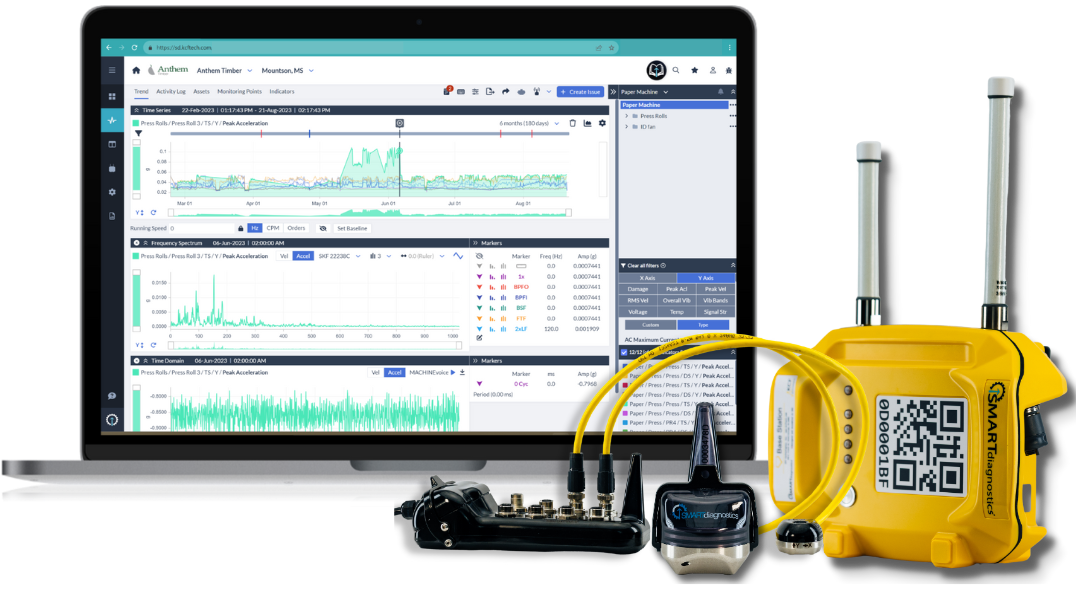
Manufacturers can choose from a variety of vibration monitoring hardware options. The best vibration monitoring equipment for your plant depends on your assets and monitoring goals, and how they fit into your overall machine health optimization strategy.
Wired Vibration Monitoring
Vibration monitoring sensors can be wired or wireless. Each type has pros and cons. Most of the drawbacks of wireless vibration sensors are only seen with older or lower quality sensors — today’s Industry 4.0 wireless vibration sensors are capable of broadcasting the entire vibration spectrum nearly continuously over a dedicated industrial-grade wireless network. The best vibration monitoring sensors offer flexible configuration options, easy installation and battery replacement, high-accuracy analysis, and the ability to monitor complex assets. They’re also optimized for low power use and rugged enough to withstand the most challenging industrial environments.
Wired vibration monitoring hardware was the more popular option before wireless sensor technology advanced to where it is today. Wired hardware is not as susceptible to connectivity issues, but running the cable required to support a wired vibration monitoring system is costly and difficult to scale.
Each individual sensor node requires its own shielded cable running back to a central system, meaning each cable must be managed, potentially installed in conduit, and protected from damage. Once sensors are set up, changing the arrangement of your sensors is so cost- and labor-intensive that many manufacturers simply don’t bother.
Many manufacturers will need some combination of wired and wireless vibration sensors to enable comprehensive condition monitoring in the most cost- and resource-effective way possible. Assets in shielded areas, such as those covered by metal or screening, may be poor candidates for wireless sensors that could struggle to connect to the network. Other machines may operate at high temperatures which could compromise the batteries on wireless sensors.
Wired hardware can limit manufacturers to sub-optimal sensor arrangements.
Vibration Monitoring for Complex Assets
Advanced vibration monitoring hardware can collect simultaneous data samples from several critical components of a given machine and transmit them wirelessly to a base station, enabling consistent measurement for triggered assets. Key metrics like variations in cycle time and vibrational changes during load cycles can be accurately captured and analyzed, letting Operations teams monitor even the most complex assets securely and remotely.
Vibration Monitoring for Gang Saws
Gang saws run constantly at high speeds but are only under load when cutting, making it difficult to obtain reliable and consistent vibration measurements for analysis. Frequent loading and unloading of the motor, combined with misalignment of the rotating shaft of the saw blades, can cause enormous stress to these machines. The inevitable result is damage or failure, which can add up to over $2 million annually in lost productivity and repairs.
Vibration Monitoring for Right Angle Transfers
A Right Angle Transfer (RAT) performs a 90-degree turn in the conveyance system of an automotive plant. When this system is disrupted, production halts can cost over $1 million per hour.
RAT systems are typically custom to the plant and built with non-standard parts — motors, belts, pinion gears, lifts and traction drivers — that have evolved over decades of configuration changes. These systems also operate with intermittent motion, meaning that wireless vibration monitoring cannot easily detect and diagnose problems during their infrequent movements.
How to Use Vibration Monitoring Data
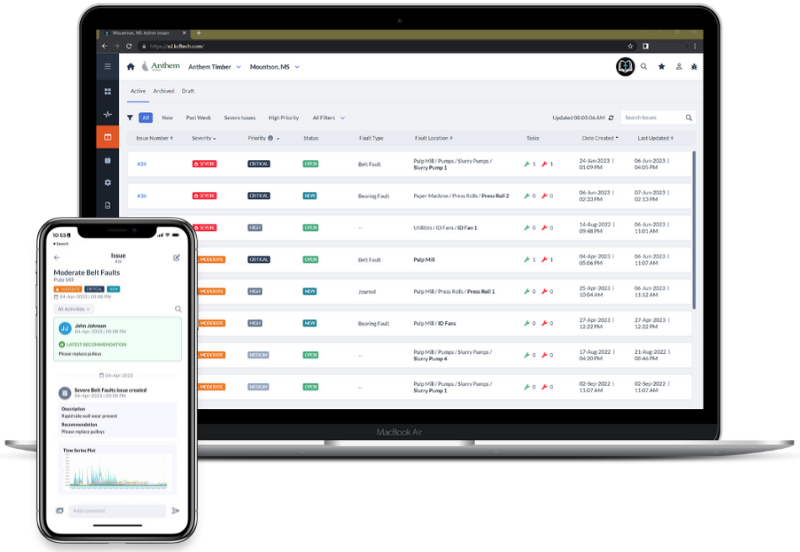
Collecting data by monitoring vibration is just one part of condition monitoring, and just the first step in developing a predictive maintenance model or a more holistic machine optimization strategy. Data from each vibration monitoring sensor must be securely transmitted to an IoT platform that gathers all asset health data across the plant. The data must then be cleaned and contextualized, and advanced analytics applied to reveal actionable insights about machine health.
Many manufacturers who implement vibration monitoring turn to a patchwork solution that relies on multiple vendors to incorporate various types of sensor data and pull them all together in a way that can be interpreted and acted on by maintenance teams. However, integrated machine health monitoring solutions are available, and can help maximize the ROI of your vibration monitoring investment.
Manufacturers no longer need to rely on patchwork monitoring solutions.
Moving Beyond Vibration Monitoring to Machine Health Optimization
Monitoring for changes in the vibration signature of machine components can help manufacturers identify inefficiencies and avoid costly failures. This will improve the operational efficiency of your plant, but fails to address the actual root of your asset issues.
An optimization-focused approach to machine health goes beyond basic vibration monitoring and analysis. A predictive maintenance program can reveal when a machine is likely to need repair; machine health optimization will identify the conditions that lead to asset damage and eliminate them. With the right machine health intelligence and analytics at your disposal, forward-thinking manufacturers can move beyond basic monitoring and solve their asset problems permanently.
Contact Us
The journey to true machine health starts with a conversation. Contact us today to learn more about eliminating the root cause of your asset failures.

